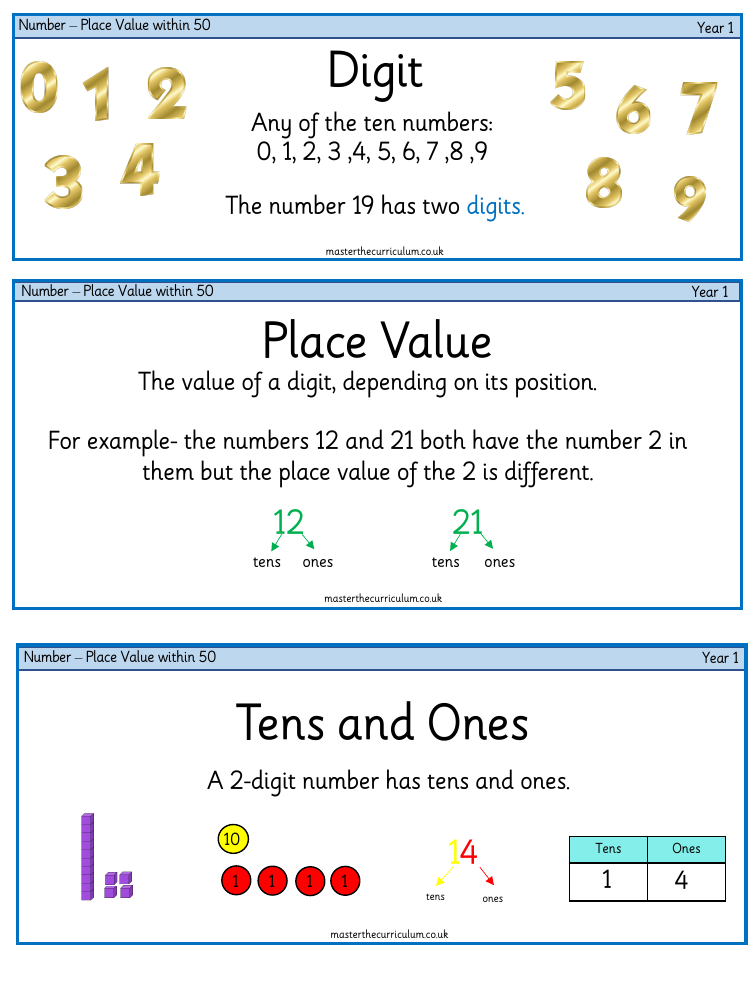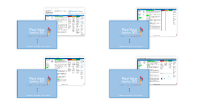Place Value within 50 - Vocabulary

Maths Resource Description
The fundamental concept of 'digit' refers to any of the ten numerical symbols ranging from 0 to 9. These digits acquire specific values based on their position within a number, known as 'place value'. For instance, although the digit '2' appears in both the numbers 12 and 21, its place value differs; in the former, it represents 'tens', while in the latter, it denotes 'ones'. Understanding place value is crucial, as it determines the actual value of a digit in a number. The concept of 'tens and ones' further explains that a 2-digit number is composed of these two parts. For example, the number 14 consists of 1 ten and 4 ones.
Various educational tools and representations are employed to teach place value to Year 1 students. 'Ten frames' are visual aids that show numbers as a combination of tens and extra units. 'Base 10' equipment helps children partition numbers into tens and ones, such as representing the number 17 as one ten and seven ones. A 'place value chart' is another illustrative method to display the value of each digit in a number. Additionally, pictorial representations can be used to symbolise numbers, and the 'partitioning' technique allows for splitting numbers into smaller segments to simplify calculations. Comparison symbols, like less than (<), equal to (=), and greater than (>), are introduced to compare numbers, while the 'part-whole model' illustrates how numbers can be broken down into constituent parts. Activities like counting in 2s and 5s, as well as understanding terms like 'one more', 'one less', 'before', 'after', 'forwards', and 'backwards', are all part of the curriculum to enhance numerical fluency within the scope of 50.


